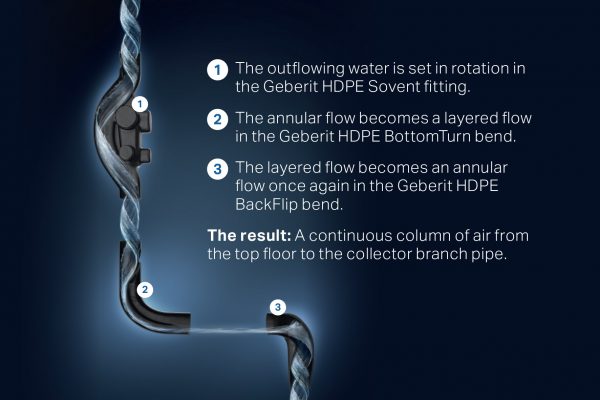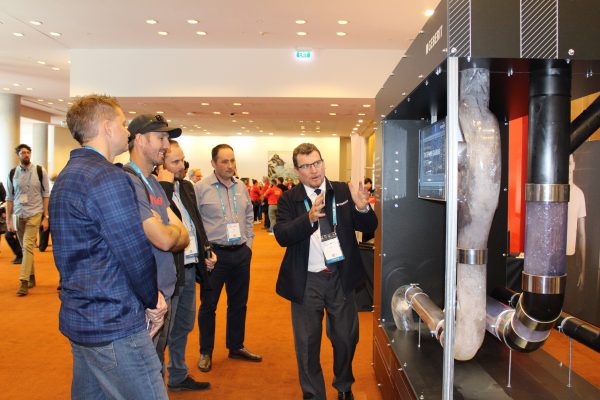Putting a whole new spin on waste systems
The Geberit SuperTube is at the forefront of waste drainage system and is now available in Australia. Sean Carroll looks into how it has found its success.
The Amanora Gateway Towers in Pune, India, designed by the Singaporean architectural firm, P&T Consultants are expected to be completed sometime in 2020. Project developer City Corporation Ltd came across the issue of drainage for the two 150m, 45-storey luxury buildings.
By turning to the Geberit SuperTube, chief operating officer Rajendra Kenjalkar is able to have an effective drainage system while taking up a minimal amount of space and time.
“We were looking for a practical yet cost-effective solution to handle the drainage for the building complex. As soon as Technical Services told us about Geberit SuperTube, we knew that this technology would be just what we were looking for to handle the complex drainage requirements of the high-rise building,” Rajendra says.
The installation is ideal for the Indian market among others whose cities are growing vertically. It not only saves space and time but requires much less raw material than traditional drainage solutions.
The SuperTube is the latest in sanitary drainage systems and lets installers greatly reduce the space needed for drainage solutions on top of increasing efficiency.
It makes use of its three sophisticated fittings: the Sovent Junction, BottomTurn Bend and BackFlip Bend to protect the annular flow and maintains a consistent central air column across the entire build.
“It has integrated ventilation in its piping and that’s why it doesn’t need any external ventilation, this makes a difference when you compare the space. You gain a lot of space when you don’t have external ventilation connected to the system,” Geberit head of basic sanitary technology Dr Abdullah Öengören says.
By controlling the discharge of the waste, the SuperTube system isn’t restricted by traditional waste drainage constraints like a ventilation shaft running parallel.
The first component of the system is the Sovent Junction; a flow divider which lets the discharge run into the pipeline without disrupting any downward force. It drops its contents down the inside of the pipe wall while the downward pipeline is forced around the incoming flow.
When the discharge comes out of its initial pipe, it meets the rest of the buildings flow vertically, not horizontally, which avoids any hydraulic pulses or disruptions.
Another component is the BottomTurn Bend which is designed for directing the flow on a 90° angle. By pushing the downward flow into a tight corner bend, it lets the natural pressure maintain the strength of the discharge.
A key feature of the BottomTurn Bend is that it eliminates the need for a horizontal offset for six metres after the curve.
When the discharge is past the BottomTurn Bend, the column of air is immediately maintained and the SuperTube can get back to doing what it does best.
The final element is the BackFlip Bend which directs discharge downwards from a horizontal position. Its unique shape curves the discharge around the corner which, again, maintains the air column.
Each of these components has undergone numerous simulations and tests which involve the in-house test facility: a high-rise tower that Geberit use solely to test its plumbing solutions.
“As we developed the SuperTube system, we investigated everything related to the SuperTube using these methods. After knowing the system will work we go into laboratory testing and we improve the results further by combining the two results from the tests,” Abdullah adds.
Customers can plan their build with the Geberit ProPlanner. Refined over 40 years, the ProPlanner offers parametric BIM data and a plug-in for hydraulic balancing the system directly in Autodesk Revit.
Now available in Australia, it’s hard to look past the Geberit SuperTube when looking for a plumbing solution that’s cost-effective and most importantly space effective.


